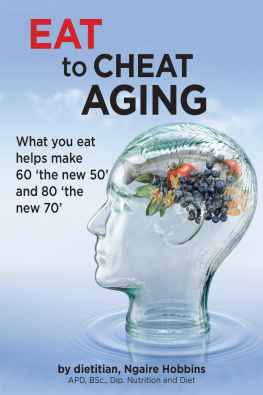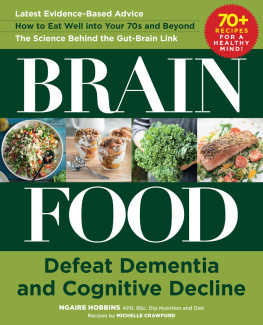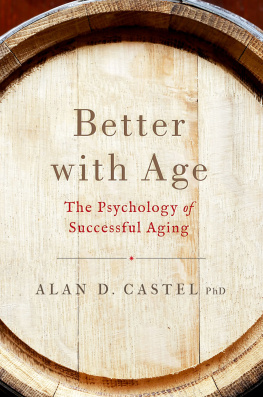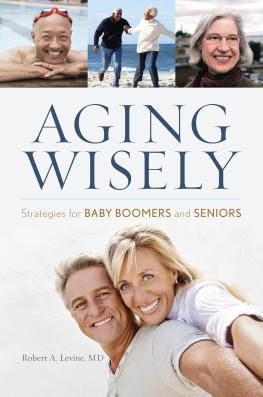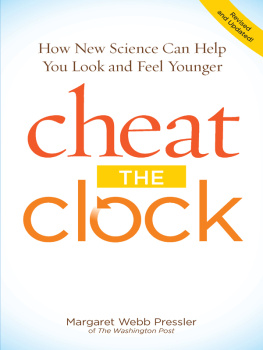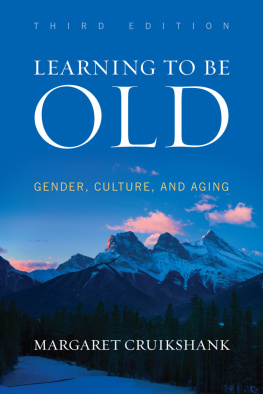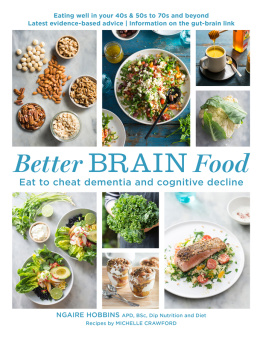
First published in 2014 PO Box 478
Northbridge NSW 2063
AUSTRALIA
Text Ngaire Hobbins
Illustrations Reg Lynch
Not to be copied in whole or in part without written authorization.
ISBN 978-0-9943440-0-7
Printed in Australia through Book Production Solutions
Introduction
Ngaire Hobbins is a leading nutritionist specializing in nutritional care of older people right up to the frail elderly. I have had the pleasure of working with Ngaire in my multi-disciplinary team at Brisbane Waters Private Hospital in New South Wales.
Nutrition for older age groups is not a favored topic in the popular magazines and too many people believe they can still diet or eat in the same way they did when they were much younger. As Ngaire points out, optimal nutritional care in older age is paramount to prevent complications of malnutrition including falls, confusion, infection, rapid decline and premature death.
Ngaire sets-up a real challenge for us to extinguish the previous incorrect stereotypes of the nutritional requirements for both fit and frail elderly and expel the myth that as you get older you need to eat less.
Ngaire highlights that too many frail older people are on inappropriate and highly restrictive diets which contribute to sub-clinical starvation. They should in fact be avoiding low fat foods and consuming the exact opposite of what we all thought, even higher fat and higher calorie foods, to maintain adequate calorie, protein intake and maintain weight.
Nutritional care of the elderly is generally poorly managed, under recognized, under diagnosed and under treated. With the advent of specialized medicine and the "single organ approach" to patients' medical problems, their nutrition is unfortunately rated low on the priority list.
Ngaire notes that malnutrition is a major risk factor for ill health in the elderly and is a major contributor to post-operative complications in a hospital setting. Poor nutritional care results in otherwise preventable hospital admissions, a prolonged and expensive hospital admission with many potential life threatening complications. It is in the interest of all hospitals to elevate nutritional care as the cornerstone of health care for all patients including the elderly.
In my clinical experience as a Consultant Geriatrician I commonly see frail elderly people with multiple co-morbidities including dementia, Parkinson's disease, stroke, heart disease, gait and balance disorders who have associated severe malnutrition.
Malnutrition rates are up to 80 percent in elderly living in hostels and nursing homes, and at least 50 percent of community-living elderly over the age of 80 have some form of malnutrition.
Ngaire's book is a very practical approach to identify the risk factors for malnutrition and offers easy strategies to eliminate those risks and improve nutrition and health for everyone facing older age.
I once said that it is a paradox of modern medicine that doctors pay little attention to the nutritional care of the elderly when it is so common, produces catastrophic complications yet is easily preventable.
This book will improve the health of many elderly people and I hope keeps them more active and more independent for longer.

DR PETER S LIPSKI
MB BS MD (Syd) FRACP FANZSGM
Consultant Physician in Geriatric Medicine
Director of Geriatric Medicine - Brisbane Waters Private Hospital
Conjoint Associate Professor Newcastle University
Chapter 1
USE IT OR LOSE IT
The hidden roles of the muscles and bones in your life
Muscle: the anti-aging frontline
Did you know the key to living long and living healthy lies in more than merely avoiding illness, it lies mostly with your muscles?
It's true. They do a lot more than move you around they hold the keys to cheating aging. And they are more vulnerable than you might imagine.
You may have managed to keep up the gym work, the cycling, swimming or whatever is your thing, and secretly gloat over how athletic you look or if your muscles are now hidden by an extra bit of padding you've stacked on how well you've been able to disguise your more generous shape. But no matter what's obvious on the surface or how you might feel, the unseen changes caused by age, wear and tear, illness and stress can rob you of muscle minute by minute.
Why is that important?
Muscle does so much more for you than you may realize. It helps maintain every one of your body's organs, helps you avoid type 2 diabetes, and ensures your brain is adequately fueled to coordinate all that activity and keep your mind firing as you'd like it to. It keeps blood coursing in your veins, oxygen moving through your body and food being processed to supply fuel and nutrients. It also helps you fight illness and infection and is essential for repair work that ranges from healing everyday bumps and bruises through to tissue, bone and tendon repair after major surgery.
Unfortunately, the effects of muscle loss can become nothing less than disastrous if you remain blissfully unaware of its significance and don't work to head off any loss.
Medical advances may have managed to conquer illnesses which once claimed lives at a younger age, but making the most of the extra 20 years or so most of us have gained as a result depends on you finding ways to keep your body (especially your muscles) and brain going a lot longer than our grandparents might have needed to in their lifetimes.
Generations ago, eating of course meant hunting and gathering, and that meant running, climbing, throwing, digging, carrying really heavy stuff like whole animals, and walking, walking, walking. If you wanted to eat, you had no choice but to keep your muscles working.
Sure, the hunter-gatherer lifestyle is no longer a career option, but unfortunately we humans are way too good at finding ways to do less and less activity, and that's not only bad news for our muscles but ultimately for our immune system, body organs and our brains.
I for one don't wish to return to my grandparents' days of scrubbing floors on hands and knees, walking miles to work every day, and living without my mod cons. But even if these bygone lives seemed hard, they worked body muscle as it needed to be worked.
My grandfather was born in the early 1900s. In those days 65 was considered quite a ripe old age time to retire on the old age pension and potter around the house. Nowadays 65 is positively young and it's not for nothing that 60 is considered the new 50. People expect far more from their remaining years than the generations before did. You want to be able to travel, to get down and dirty with the grandkids, to embrace new technology Skype, Facebook, perhaps online dating and maybe even take up belly dancing or skydiving.
Grandad had to chop and split wood and carry it up to the house every day just to get a cup of tea in the morning. He had to push a hand-mower across the lawn each Saturday and, if something had to be repaired, out came the hammer, the handsaw, the hand-drill and the manual screwdriver. Today we push a button to boil the jug, push a button to start the mower which almost drives itself and we can't imagine life without the electric drill, the chainsaw and perhaps even the electric nail gun.
My grandmother did her washing in the copper, dragging each item out of the scalding water with a stick and putting it all through a hand-wringer that strenuously objected if the sheets dared bunch up too much. The wringer then had to be released, the washing unwound from around the rollers, and the whole process started again. Then the still very wet and very heavy load had to be carried out to the washing line. The line was a floppy wire strung across the yard and propped up with long poles that needed to be angled low when grandma pegged out the washing, then re-angled to hoist the washing higher to avoid dogs and small children playing as the washing dried (try doing that with a heavy load of wet washing on the line). She was judged by her good housekeeping and religiously mopped the floors and dragged the carpets bodily out of the house, draped them over the back fence, then beat the dust out of them with a cane carpet beater. She even made cakes as light as air using only a wooden spoon, a hand-beater and elbow grease.
Next page
